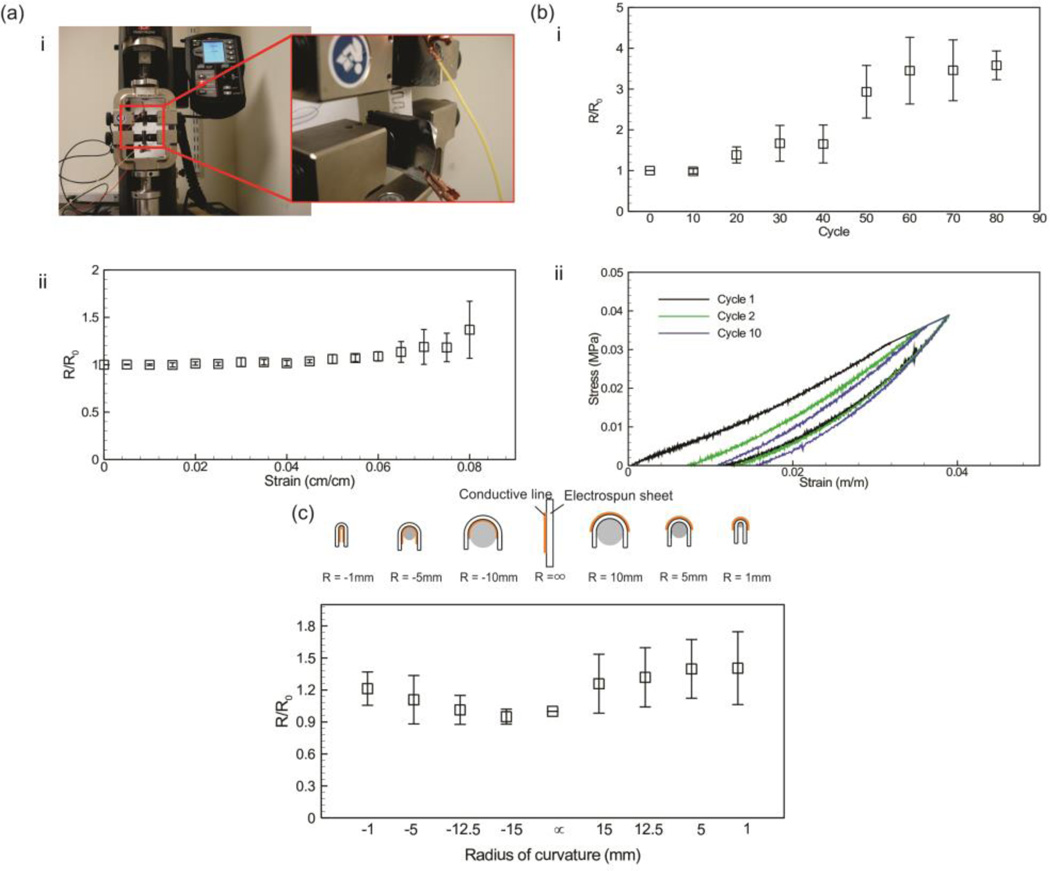Figure 2.
Elasticity and flexibility of the fiber-based electronic circuits. (a) Variation of the electrical conductivity of the serpentine line as a function of mechanical strain. (i) Images show the setup used for stretching the sample and measuring its tensile mechanical properties while monitoring its electrical resistance. (ii) The values of electrical resistance of the stretched patterns (R) nondimensionalized with the values in the unstretched condition (R0); the presented results are the average of (at least n = 6) independent measurement. (b) Effect of cyclic load on the electrical resistance (i) and stress-strain curve (ii) of the fabricated pattern; the device was stretched by 4% of its original length and then released to its original length with a rate of 1 cycle/minute. (c) Schematic diagram of patterned silver on sheet and wrapping around curved surface with different curvature radii (top) and the ratio of the measured electrical resistance after cyclic load (R) to the initial electrical resistance (R0) of patterned silver on electrospun sheet versus the curve diameter to which the sheet is turned (bottom).

